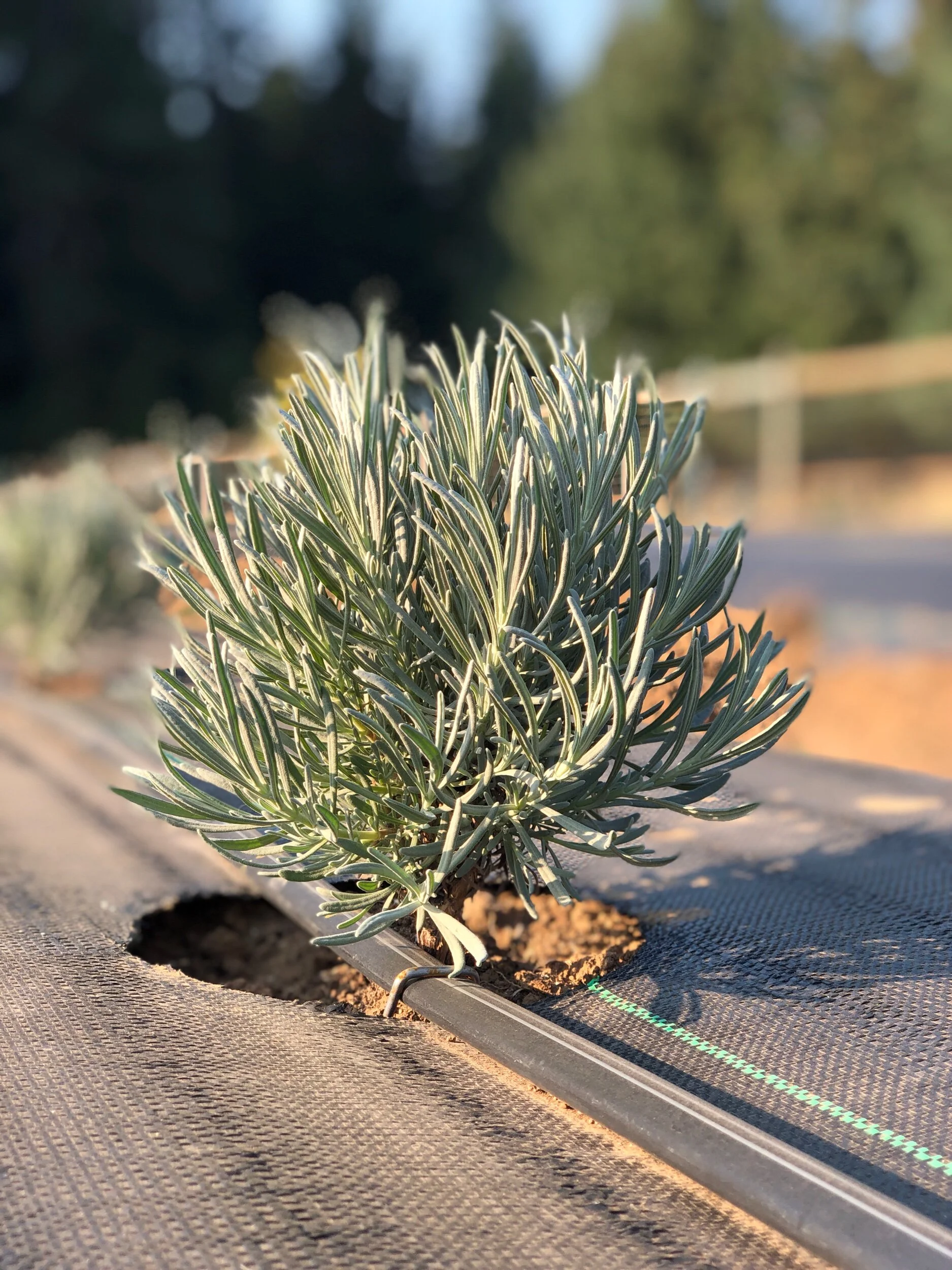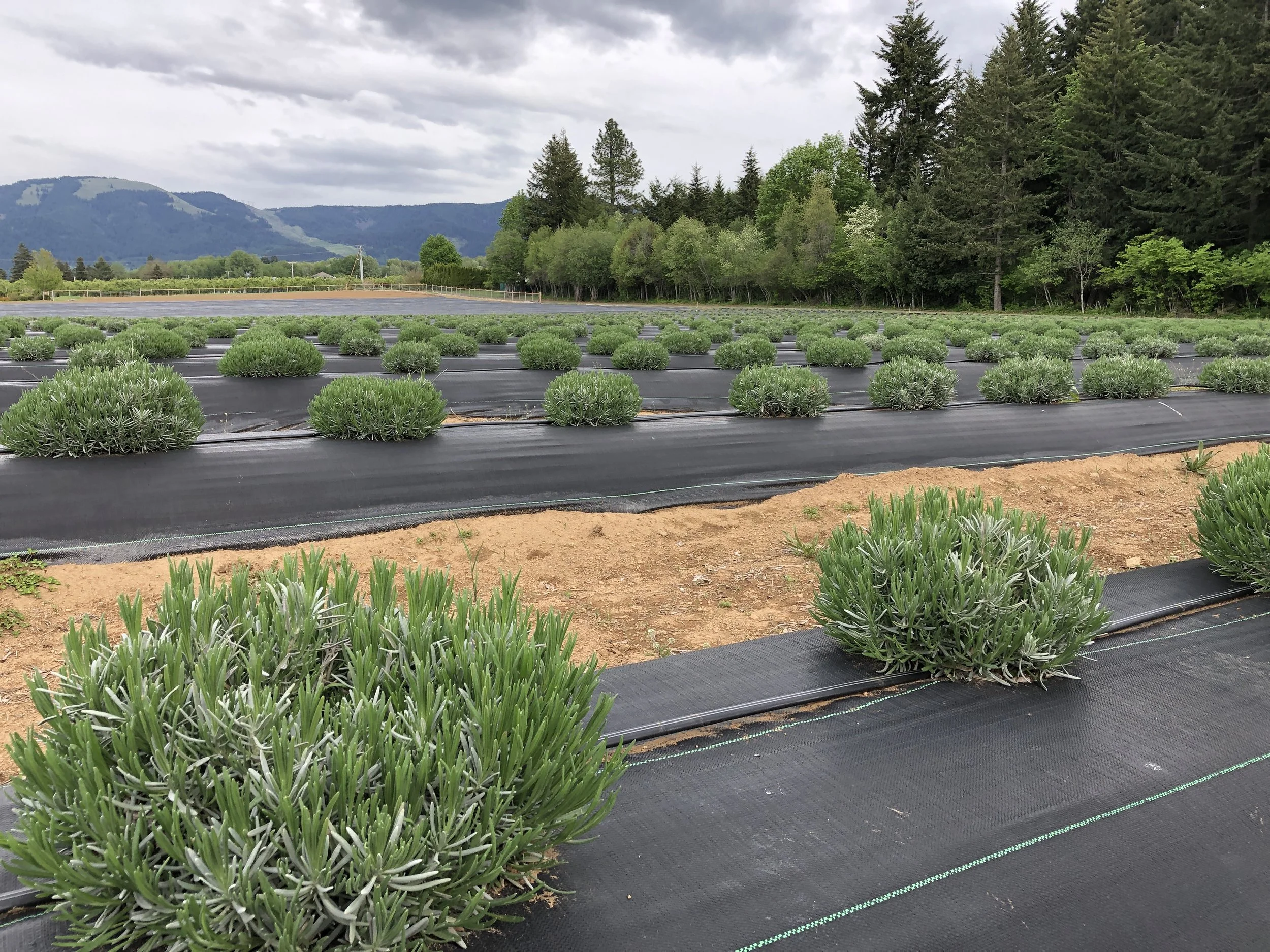How to Grow and Care for Lavender - Basic Rundown
Plant lavender in the spring after the risk of frost has passed and the soil has warmed up. Alternatively, plant lavender in the early fall after heat extremes have diminished. Your lavender will grow at a moderate to fast pace, often adding at least a few inches to its size each year. Intermedia (French) lavenders will grow faster than Angustifolia (English) lavenders.
Lavender Care
As with most plants, your success in growing lavender will depend both on what kind of growing conditions you provide and which varieties you select to grow. Lavender plants will tolerate many growing conditions, but they thrive best well-draining (calcium rich) soil and full sun. Avoid planting lavender in clay soil. If your soil is rich in clay, build a small berm with a loose, sandy loam soil.
Growing Lavender in a Container
Most lavender varieties dislike living confined in a pot. The dwarf varieties are most appropriate for container life. Where outdoor planting is not practical, one can always grow dwarf lavender in pots and move them around to follow the sun. A pot that can accommodate the root ball with a couple of inches to spare is the best choice.
Ensure that the container has plenty of drainage holes at its base. Root rot (from retained water in soils) is a serious problem experienced by lavender plants. Use a loose (cactus mix) potting soil for planting in containers and remember that container grown lavender will require careful watering and special attention, more than garden grown plants. A good rule of thumb is to water when the soil (not the plant), appears dry, watering at the base of the plant to limit dampness on the foliage. It’s not the amount of water that kills, it’s the amount of time that the roots and foliage remain wet (soaked) that kills.
Light – the more the better
Lavender plants thrive in full sunlight, which is the best way to guarantee a lot of buds and big, full bushes.
Lavender will not tolerate much (if any) shade, so don't plant them in a spot where they'll be overshadowed by trees or other large plants.
Fresh dry air- keeps fungus away. If you use a sprinkler system, know that if your lavender gets soaked on a regular basis and cannot dry out, you may see a fungal foliage die off.
Lavender loves to grow near concrete (concrete is hot & dry and adds calcium to the soil).
Lavender resents growing next to lawns (the lawn adds humidity to the air & extra moisture to the soil). Lawn fertilizers and Weed & Feed can kill your lavender.
Soil – more minerals, less organic matter
Lean soil will encourage a higher concentration of lavender fragrance. Never add organic soil amendments, beauty bark or fertilizer to your lavender’s soil. Lavender plants prefer well- drained soil that is on the drier side, so if you're using a potting mix, be sure to use cactus soil. An alkaline or especially chalky soil will enhance your lavender's fragrance, while any pH below about 6.5 will likely cause lavender plants to be very short-lived.
Water – they drown easily
Lavender is a resilient plant that is drought tolerant once established. When first starting your lavender plants, keep them regularly watered, allowing soil to dry in between watering.
Pinch off the blooms during their first growing season.
After the first year, lavender can handle periods of drought.
Temperature and Humidity - keep it hot and dry.
Lavender can withstand a range of temperatures, and it is dampness more than the cold that's responsible for killing lavender plants. Dampness can come in the form of soggy soil during the winter months or high humidity in the summer. If humidity is a problem, make sure you have plenty of space between your plants for airflow, and always plant your bushes in a sunny location. Protect lavender plants from harsh winter winds by placing a large boulder, stones or brick wall to provide additional heat and protection from temperature extremes (this is a portable hearth for new plantings getting through their first year). If you live in an area where the ground routinely freezes and thaws throughout the winter, your lavender plants will benefit from a little extra soil applied after the ground initially freezes to protect the roots. Avoid using bark mulch around your lavender.
Fertilizer – Don’t do it.
Types of Lavender We Offer
English Lavender: (Lavandula angustifolia): A varietal that's available in several cultivars, including: ‘Royal Velvet,' a new-fashioned variety with rich purple flowers; 'Hidcote,' a version favored for its dark purple flowers; 'Melissa,' a unique blend that produces pale pink flower spikes and minty culinary use. Angustifolias are more cold tolerant.
French Lavender: Lavandin (Lavandula x intermedia): A varietal with several cultivars including: 'Gros Bleu,' which is particularly popular for drying; 'Grosso,' a highly disease- resistant and fragrant standard; ‘Super’, a highly desirable lavender prized for its unique aroma. Intermedias are more heat tolerant.
Pruning Your Lavender
Although lavender plants get regularly pruned simply by harvesting the flowers and stems, further fall pruning is recommended to keep your plant dome shaped and protected from weight bearing snow & ice damage. Taller lavender varieties can be cut back by approximately one-third of their height, while lower growing varieties can either be pruned back by a couple of inches or cut down to new growth. For best results: Trim your lavender into a smooth dome shape.
If your lavender suffers winter die-back, don't prune your plants until you see new green growth at the base of the plant. Trim away any dead plant material in late June so that living tissue can grow into the empty space.
If you ever have questions about how to take care of your lavender, please feel free to contact the Van Gogh Lavender Care Hotline (206) 595-4831 (text or call) or email: Sandra@vangoghlavender.com






